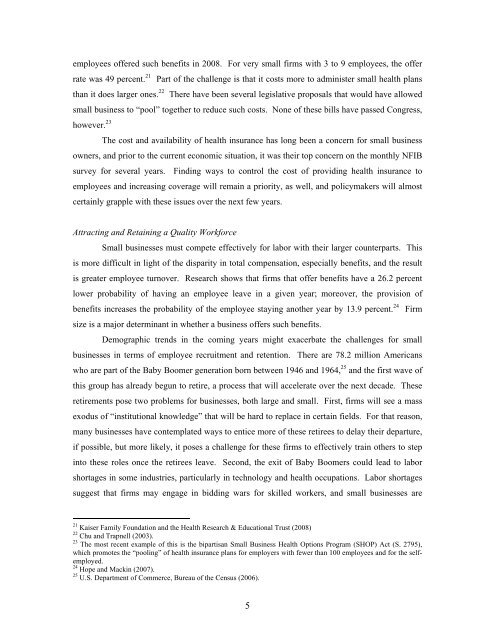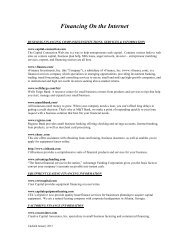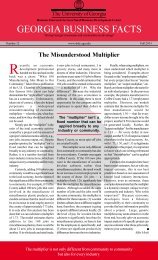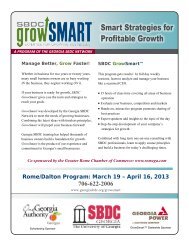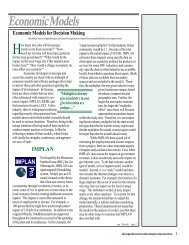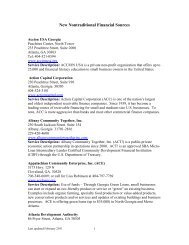Looking Ahead - Georgia Small Business Development Center
Looking Ahead - Georgia Small Business Development Center
Looking Ahead - Georgia Small Business Development Center
You also want an ePaper? Increase the reach of your titles
YUMPU automatically turns print PDFs into web optimized ePapers that Google loves.
employees offered such benefits in 2008. For very small firms with 3 to 9 employees, the offerrate was 49 percent. 21 Part of the challenge is that it costs more to administer small health plansthan it does larger ones. 22 There have been several legislative proposals that would have allowedsmall business to “pool” together to reduce such costs. None of these bills have passed Congress,however. 23The cost and availability of health insurance has long been a concern for small businessowners, and prior to the current economic situation, it was their top concern on the monthly NFIBsurvey for several years. Finding ways to control the cost of providing health insurance toemployees and increasing coverage will remain a priority, as well, and policymakers will almostcertainly grapple with these issues over the next few years.Attracting and Retaining a Quality Workforce<strong>Small</strong> businesses must compete effectively for labor with their larger counterparts. Thisis more difficult in light of the disparity in total compensation, especially benefits, and the resultis greater employee turnover. Research shows that firms that offer benefits have a 26.2 percentlower probability of having an employee leave in a given year; moreover, the provision ofbenefits increases the probability of the employee staying another year by 13.9 percent. 24 Firmsize is a major determinant in whether a business offers such benefits.Demographic trends in the coming years might exacerbate the challenges for smallbusinesses in terms of employee recruitment and retention. There are 78.2 million Americanswho are part of the Baby Boomer generation born between 1946 and 1964, 25 and the first wave ofthis group has already begun to retire, a process that will accelerate over the next decade. Theseretirements pose two problems for businesses, both large and small. First, firms will see a massexodus of “institutional knowledge” that will be hard to replace in certain fields. For that reason,many businesses have contemplated ways to entice more of these retirees to delay their departure,if possible, but more likely, it poses a challenge for these firms to effectively train others to stepinto these roles once the retirees leave. Second, the exit of Baby Boomers could lead to laborshortages in some industries, particularly in technology and health occupations. Labor shortagessuggest that firms may engage in bidding wars for skilled workers, and small businesses are21 Kaiser Family Foundation and the Health Research & Educational Trust (2008)22 Chu and Trapnell (2003).23 The most recent example of this is the bipartisan <strong>Small</strong> <strong>Business</strong> Health Options Program (SHOP) Act (S. 2795),which promotes the “pooling” of health insurance plans for employers with fewer than 100 employees and for the selfemployed.24 Hope and Mackin (2007).25 U.S. Department of Commerce, Bureau of the Census (2006).5


